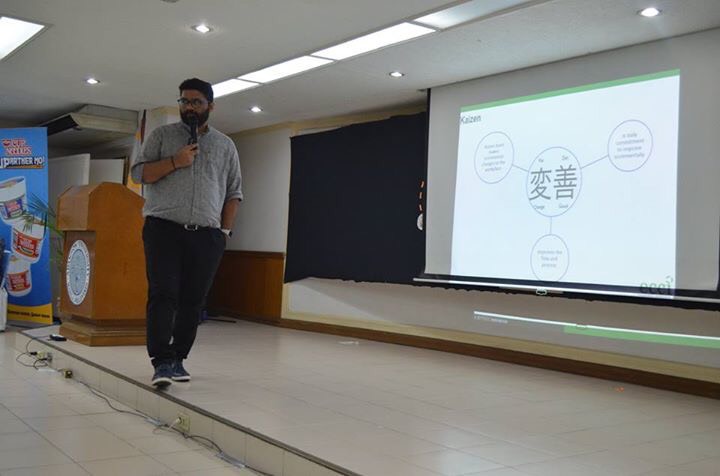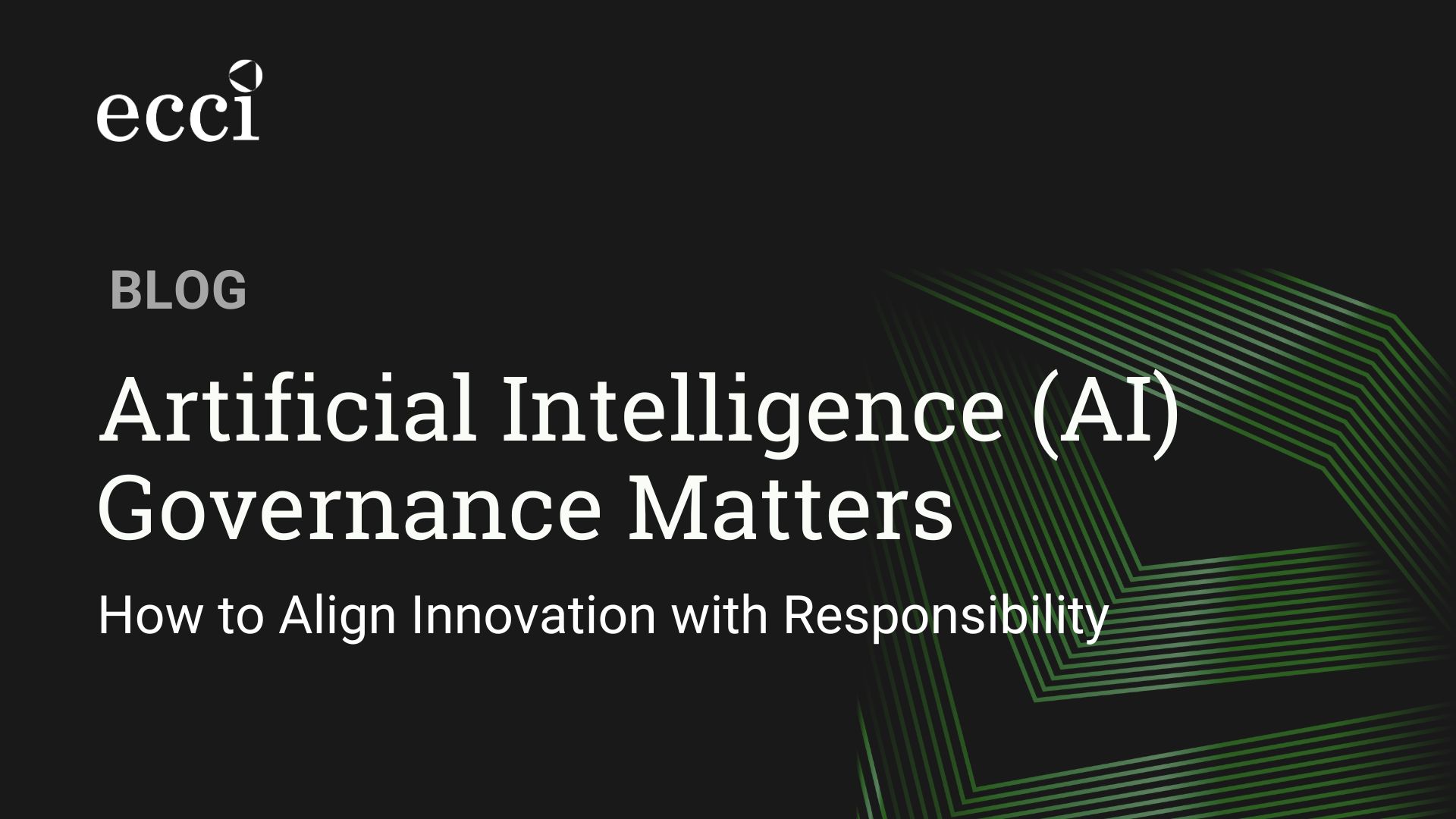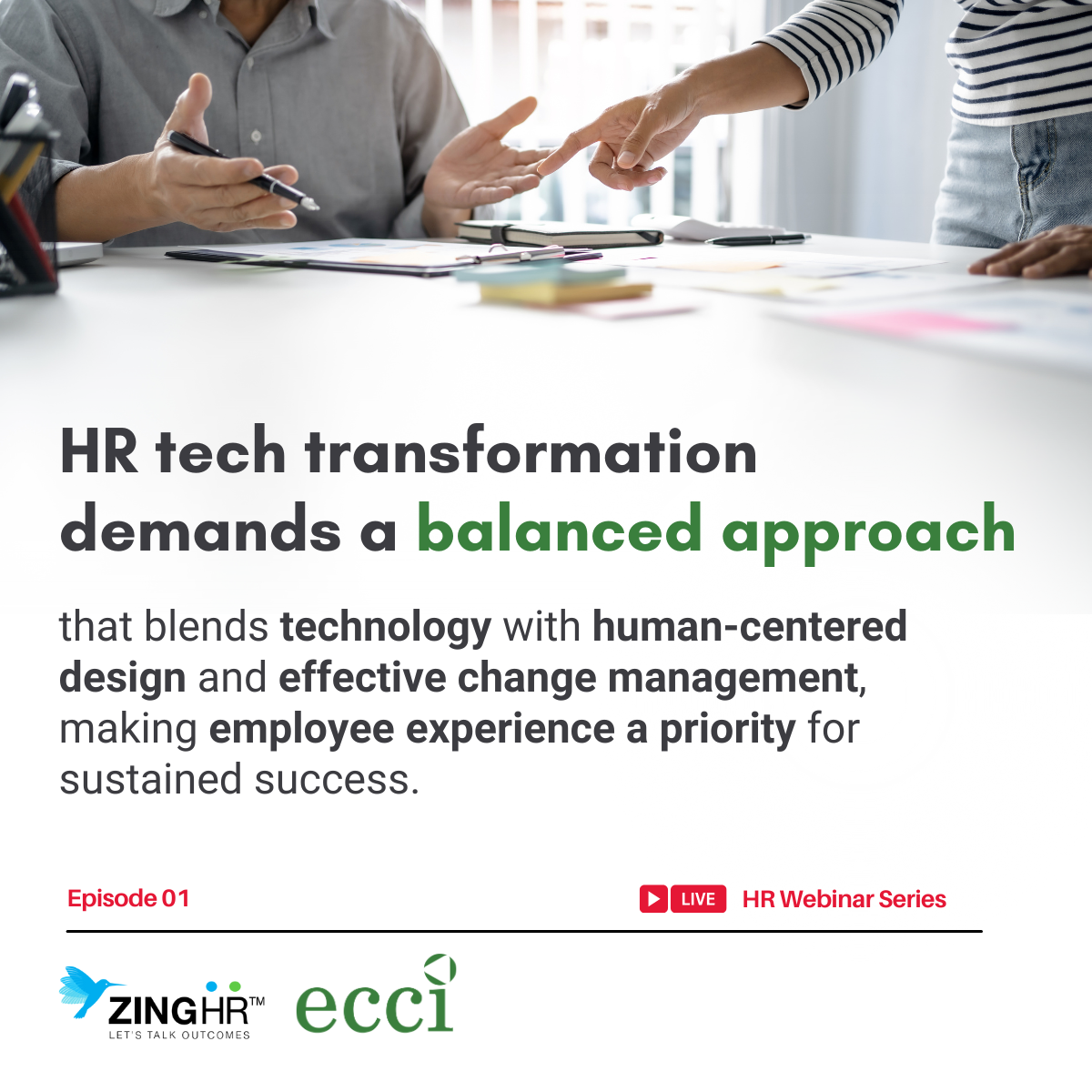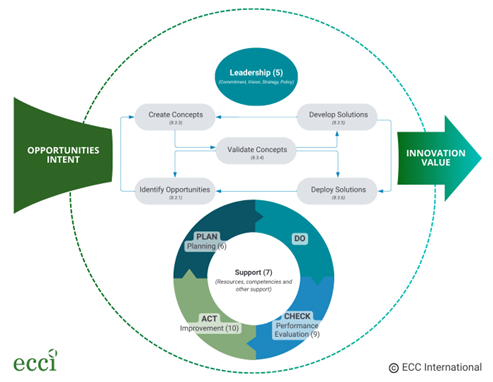Speaking in front of several Industrial Engineering students from across NCR at Adamson University’s annual TRENDS IE forum, Mr. Arpit Shrivastava, Practice Lead, gave an informative talk on the latest trends in Business Process Re-Engineering.
The main highlights of the presentation was Mr. Arpit sharing case studies from ECCI’s success stories from multiple clients in the area of business improvement.
One such case study was a process improvement project where ECCI helped capacitate teams to reduce lead time by 33% and cut down costs by Php 15,000 every month per department.

Pain areas in business improvement were explained and solutions to each were given based on ECCI’s experience.
One of the problems cited was time spent on back-office processes. According to an Adobe Inc. report, on average, an employee spends 6.8 hours every week on tasks like printing and sending emails. Mr. Shrivastava also shared the alarming trend that companies are relying on complex processes which hinder productivity and the achievement of organizational goals.
When asked about the latest trends in business process re-engineering, Mr. Shrivastava explained three key drivers which will shape the business improvement scene: automation, big data and continuous but subtle improvement.
Automation
One of the biggest concerns in IE is the automation of several processes. This trend will continue and be more relevant in the coming years as more companies are relying on machines and deep learning algorithms to improve efficiency and lower costs. Amazon Go, a new store model where cashiers are removed and carts are automatically deducted from users accounts, was used as an example. One of the key concerns for the rising trend of automation is job displacement as an estimated 50% of people will lose their jobs, according to The Economist.
Big Data
Big Data is being leveraged by companies to see improvement opportunities which normal metrics could overlook. Mr. Shrivastava explained that 2.5 Quintillion bytes of data are generated everyday. Companies must use this data to seek trends and proactively improve gaps. Because of the unstructured nature of big data, organizations must attempt to make sense of the data that they are analyzing in order to derive information which will help in decision making.
Continuous but subtle improvements
The last trend explained was the growing push for organizations to make smaller but continuous changes in processes. This can be likened to have applications like Grab and Uber release small updates that change processes. However, since the changes are minimal, change management does not become a concern. It is expected that organizations will take this similar approach to lower the amount of time to deploy a new process and improve compliance.









